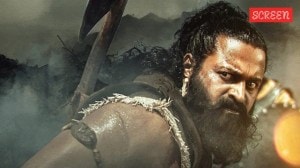Leak not plugged even 2 months after complaint: CBI
It was a shocking security lapse in the Naval and Air Force headquarters that led to the war room leak case. But that’s only part of the story.

It was a shocking security lapse in the Naval and Air Force headquarters that led to the war room leak case. But that’s only part of the story.
A careful reading of the CBI’s chargesheet shows how, even after the scam was busted, military secrets were delivered to arms dealers at furious pace —for two long months.
Consider the sequence of events, as made out in the chargesheet, after the IAF got an anonymous complaint against Wing Commander S L Surve in April 2005:
• A month after the complaint, Surve, posted in the IAF’s Directorate of Operations, is searched and an unofficial pen drive seized. Four days later, IAF orders a Court of Inquiry. Despite orders that he is not to attend office, Surve is allowed to reach his chamber and destroy a large number of documents, copies of which had already been made.
• Surve implicates arms trader and ex-Naval officer Kulbhushan Parashar. In the pen-drive, IAF finds copies of thousands of documents of the Directorate of Naval Operations (DNO). The inquiry zeroes in on Commander Vijendra Rana. The IAF informs the Navy.
• It takes almost two months (July 12, 2005) for Rana to be searched. In his house, a computer ‘‘unauthorizedly’’ taken out from the super-sensitive DNO office with the help of the third accused officer, Commander Vinod Kumar Jha, is located.
• Once it took over, CBI sought help from the Andhra Pradesh Forensic Science Laboratory and recovered thousands of pages of erased files from two pen-drives—one seized from Surve, the other from Rana.
• In all, 3,431 pages of sensitive information was recovered from the pen-drive with Rana, indicating it was being copied from the DNO till July 12, 2005, the day he was searched.
There are interesting entries, listed by the CBI as evidence. For example, there’s even the mention of an Intelligence Bureau report against Parashar, which has been conveyed to him.
And among the conversations recovered from the voice & message chatting software Skype are the following:
• ‘‘Got it sir. The BSF guys want something bigger than the Rigid Hull Inflatable Boats (RHIBs) as their budget is around 16 crore for each boat. You would have also seen the specifications not on file by now and understood.’’
• ‘‘First things first. Please mention the lead time to deliver after receiving firm order for ONGC boats. Also hurry up with your brochures so that I can take up the case with some colourful photos thrown in.’’
• ‘‘I have re-done the Service Requirements for 23 metre boats for ONGC. Please go through them carefully. I guess you will require to send it to your friends in the UK so that somebody can go through it under a scanner so as to make it foolproof.’’
The Skype conversations indicate that thanks to information on Navy, IAF, ONGC and BSF deployments, arms dealers could tailor offers from companies such as Divex, Caird Ryner and Benbridge of UK, Proof Technique of Germany, and H S Marine of Hong Kong.
Abhishek Verma emerges as a shady benefactor of this group, hosting several parties to which proprietors of these firms were invited.
The motive of the arms dealers, as described by the CBI: ‘‘To develop close links with the Defence personnel who would be able to provide them with necessary critical information to illegally further interests, (they) would invite the willing Defence officials to parties organized by firms dealing with Defence supplies where top management hierarchy comprising foreigners were introduced.’’
(Concluded)



- 01
- 02
- 03
- 04
- 05




























